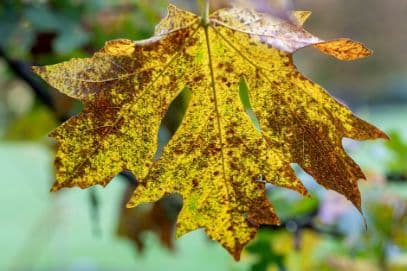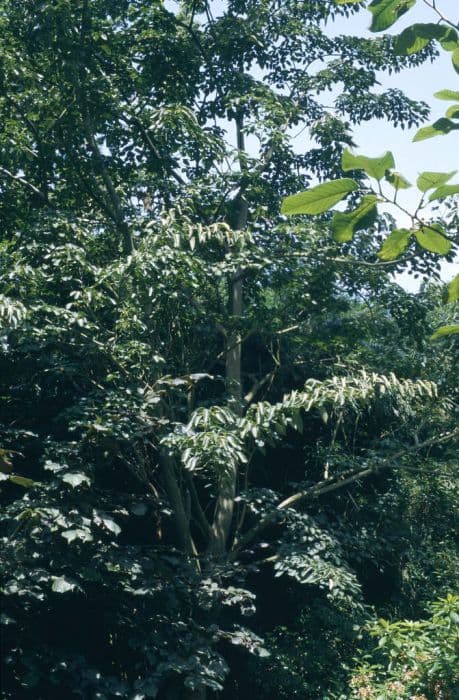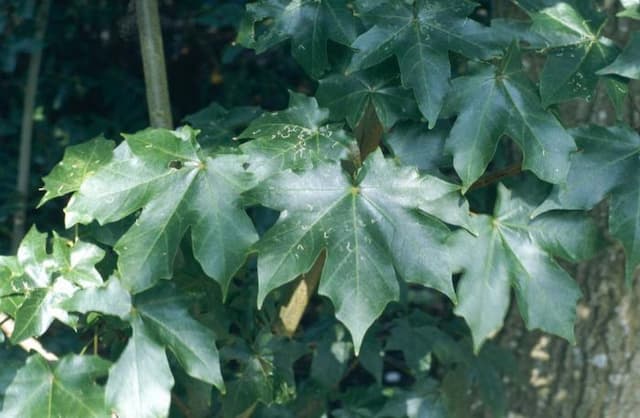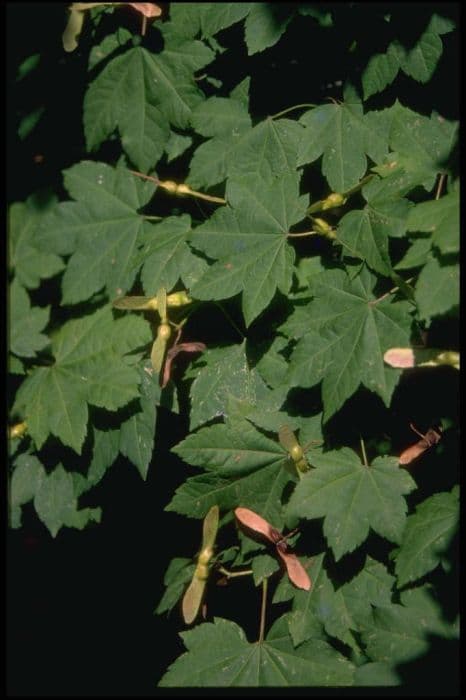Japanese Maple Acer amoenum
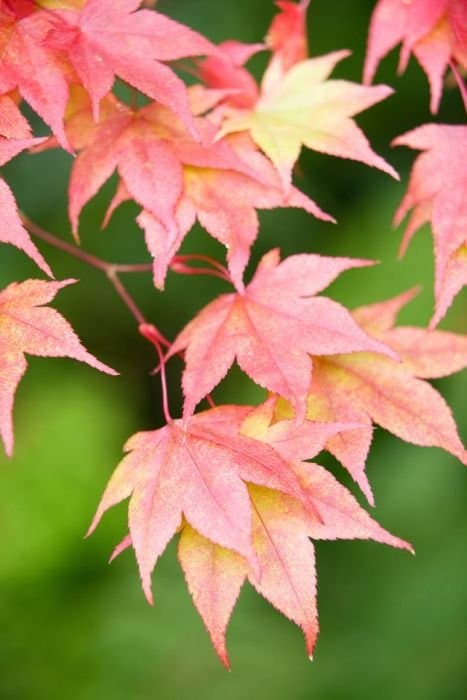
ABOUT
Acer amoenum, commonly known as the Japanese maple, is a highly ornamental plant appreciated for its aesthetic appeal and variety of forms. This plant displays a magnificent array of leaf colors and shapes. The leaves are typically palmate, meaning they resemble an open hand, with multiple lobes radiating outwards. These lobes are finely pointed, giving the foliage a delicate and intricate appearance. During different seasons, the leaves transform through a palette of colors. In spring, the new foliage may emerge in vibrant hues that range from bright green to deep reds or purples, often with undertones of bronze. As they mature, the leaves might turn into a more consistent shade of green, while some cultivars maintain their red or purple tones. In fall, the Japanese maple becomes especially striking as the leaves develop spectacular shades of orange, scarlet, or deep crimson, making the plant a standout in any landscape. The leaves are arranged in an opposite fashion on the branches, contributing to a balanced, visually-pleasing symmetry that is characteristic of the Japanese maple. The branching habit of this plant often results in a graceful, rounded canopy that can be dense or open, depending on the variety. The smaller branches may weep or cascade, adding to the plant's elegant form. The bark of the Japanese maple varies between species but commonly has a smooth texture that may become more rough and textured with age. The color of the bark can range from a standard gray-brown to more unique shades such as light green or even reddish-brown, adding interest even in the absence of leaves during the winter months. The Japanese maple also produces flowers and fruit, although they are not as prominently featured as the foliage. The flowers are small and may be red or purple, somewhat hidden among the leaves. The fruit takes the form of samaras, often known as 'helicopter seeds' due to their distinctive shape that allows them to spin and float away from the parent tree. Overall, the Japanese maple is celebrated for its stunning foliage, artistic branching, and the subtle beauty of its bark, making it a cherished addition to gardens and cultivated landscapes.
About this plant
 Names
NamesFamily
Sapindaceae
Synonyms
Japanese Maple, Red Emperor Maple
Common names
Acer amoenum, Acer palmatum var. amoenum.
 Toxicity
ToxicityTo humans
Acer amoenum, commonly known as the Japanese Maple, is not typically known to be a toxic plant to humans. Ingestion of parts of this plant is not generally associated with severe toxicity or poisoning. Consequently, there is limited information on the symptoms of poisoning from consuming this plant since it is not considered highly toxic to humans. However, as with any plant material, individual sensitivities or allergic reactions may occur, so it is advisable not to ingest parts of plants that are not intended for human consumption.
To pets
Acer amoenum, commonly known as the Japanese Maple, is not widely recognized as a toxic plant to pets. It is not usually associated with severe toxicity or poisoning in animals like cats and dogs. Therefore, there are no specific symptoms of poisoning commonly documented for pets that ingest this plant. However, individual sensitivities or allergic reactions could happen, and it is generally recommended to prevent pets from ingesting non-food plants to avoid potential complications.
 Characteristics
CharacteristicsLife cycle
Perennials
Foliage type
Deciduous
Color of leaves
Varies
Height
15-25 feet (4.5-7.6 meters)
Spread
10-20 feet (3-6 meters)
Plant type
Tree
Hardiness zones
5
Native area
Japan
Benefits
 General Benefits
General Benefits- Ornamental Value: Acer amoenum, commonly known as Japanese maple, offers striking foliage that adds aesthetic appeal to gardens and landscapes.
- Seasonal Interest: Japanese maples provide year-round interest with vibrant spring and summer leaves, stunning fall colors, and interesting branch patterns in winter.
- Shade Provider: The tree's canopy gives shelter and shade, creating cool areas in gardens, which can be beneficial for underplanting and relaxation spots.
- Habitat for Wildlife: It can serve as a habitat and food source for various birds and insects, thus contributing to biodiversity.
- Compact Size: Ideal for small gardens due to its relatively small size compared to other trees.
- Low Maintenance: These trees generally require minimal pruning and care once established.
- Soil Erosion Prevention: The root systems of Japanese maples can help stabilize soil and prevent erosion on slopes or in certain garden settings.
- Variety of Cultivars: Offers a wide range of cultivars with different leaf shapes, colors, and sizes, allowing for personalized garden design.
 Medical Properties
Medical Properties- Anti-inflammatory: Compounds in Acer amoenum may help reduce inflammation.
- Antioxidant: The plant contains antioxidants which may protect against oxidative stress.
- Neuroprotective effects: Extracts from the leaves might have properties that protect nerve cells.
 Air-purifying Qualities
Air-purifying QualitiesThis plant is not specifically known for air purifying qualities.
 Other Uses
Other Uses- Woodworking: The wood of Japanese Maple is valued for its hardness and is sometimes used in small woodworking projects, such as crafting furniture details or intricate inlays.
- Ornamental Use: Japanese Maples are commonly used in bonsai cultivation due to their aesthetic appeal, distinctive leaf shapes, and ability to be pruned into artistic forms.
- Photography Backdrop: The vibrant colors of Japanese Maple leaves make them a popular subject for photographers, particularly in the fall season.
- Dye Production: The leaves of Japanese Maple trees can be used to create natural dyes for textiles, giving fabrics a range of beautiful, earthy tones.
- Cultural Symbolism: In Japan, the Japanese Maple tree is a symbol of peace and serenity and is frequently found in traditional Japanese gardens.
- Education: The tree is utilized in educational settings, such as schools and arboretums, to teach about plant biology and diversity in species.
- Culinary Exploration: While not commonly known, the seeds of some Japanese Maples are edible and can be a unique ingredient in experimental cooking.
- Landscape Design: Their diverse leaf shapes and colors are used by landscape architects to create visually stunning garden landscapes with year-round interest.
- Environmental Indicator: Scientists can use certain health aspects of the species to gauge the impact of environmental changes like pollution and climate change in a region.
- Crafts and Decorations: Dried leaves of the Japanese Maple can be incorporated into crafts and decorations, especially as part of fall-themed arrangements.
Interesting Facts
 Feng Shui
Feng ShuiThe Acer amoenum, commonly known as the Japanese Maple, can be used in Feng Shui to introduce wood elemental energy, symbolizing growth and vitality. It can be placed in the East to enhance family harmony and health, or in the Southeast to invite wealth and abundance.
 Zodiac Sign Compitability
Zodiac Sign CompitabilityThe Japanese Maple is not used in astrology practice.
 Plant Symbolism
Plant Symbolism- Beauty: The Acer amoenum, commonly known as the Japanese maple, is often associated with beauty due to its gracefully shaped leaves and stunning seasonal color changes.
- Elegance and Grace: Japanese maple trees are symbolic of elegance and grace, reflecting the artful way their branches and leaves cascade and sway.
- Peace and Tranquility: The serene presence of a Japanese maple in a garden is thought to bring about a peaceful atmosphere, making it a symbol for tranquility.
- Endurance and Strength: Despite their delicate appearance, Japanese maples can be quite hardy. They are seen as emblematic of endurance and the strength to withstand challenges.
- Balance: Japanese maples are often used in traditional Japanese gardens, where they represent balance, an important aspect of the garden's harmony between man and nature.
 Water
WaterJapanese Maples, including the Acer amoenum, should be watered thoroughly once a week during the growing season, especially if there is no significant rainfall. The soil should be kept evenly moist but not waterlogged. Each watering session should provide enough water to penetrate the soil to a depth of at least several inches, which typically equates to about 1 to 1.5 gallons per square foot depending on soil type and weather conditions. During the dormant season, reduce watering but make sure the root ball does not dry out completely.
 Light
LightJapanese Maples, like Acer amoenum, thrive best in a location that offers dappled or morning sunlight with afternoon shade. Direct, hot afternoon sun can scorch the leaves, so a spot that mimics the light conditions of their natural understory habitat is ideal. Bright, indirect light facilitates the most vibrant leaf coloration.
 Temperature
TemperatureJapanese Maples, or Acer amoenum, prefer temperate climates and can survive in temperatures ranging from about 20 to 80 degrees Fahrenheit. They do best in a climate where the average temperature hovers around 60 to 75 degrees Fahrenheit. These trees can tolerate a light frost but should be protected from harsh, cold winds and extreme winter temperatures that fall below 20 degrees Fahrenheit.
 Pruning
PruningPruning Japanese Maples, such as the Acer amoenum, is typically done to shape the plant, remove dead or diseased wood, and encourage healthy growth. The best time to prune is late winter or early spring before new growth starts. Pruning should be done sparingly, as Japanese Maples do not require heavy trimming, and over-pruning can damage the tree. Focus on removing only necessary branches to maintain the desired shape and health of the tree.
 Cleaning
CleaningNot needed
 Soil
SoilJapanese Maple thrives in well-draining, slightly acidic soil with a pH level between 5.5 and 6.5. A recommended soil mix is one part Akadama, one part Pumice, and one part organic compost to ensure adequate drainage and fertility.
 Repotting
RepottingJapanese Maple should be repotted every 2-3 years in late winter or early spring before the new buds swell, to refresh the soil and prevent root crowding.
 Humidity & Misting
Humidity & MistingJapanese Maple prefers moderate humidity levels but is adaptable to the ambient outdoor humidity in most temperate regions. It does not require specific humidity control when grown outdoors.
 Suitable locations
Suitable locationsIndoor
Place the Japanese Maple near a bright, indirectly lit window.
Outdoor
Plant in partial shade, protect from harsh sunlight.
Hardiness zone
5-8 USDA
 Life cycle
Life cycleThe life of the Japanese maple (Acer amoenum) begins with seed germination which occurs typically in the spring following a period of stratification to break dormancy. After germination, the seedling stage is marked by the development of the plant's root system and the first pair of true leaves, and this can last for one growing season to several years. As the seedling matures into a juvenile tree, vegetative growth accelerates, including the development of the characteristic palmate leaves and woody stems. The tree reaches maturity in several years and starts the reproductive phase by producing flowers; the male flowers release pollen while the female flowers become fertilized, leading to the production of winged samaras. These samaras are dispersed by wind in the autumn and, once they land in a suitable location, they will remain dormant until the following spring. As a perennial, the Japanese maple will repeat this reproductive cycle annually, while continuing to grow and develop its intricate branching pattern and fall color display, often living many decades.
 Propogation
PropogationPropogation time
Spring-Early Summer
The Japanese maple, commonly known as Acer amoenum, is best propagated by seed or softwood cuttings. Among these, the most popular method is through softwood cuttings, typically undertaken in early summer when new growth is still supple and has not yet hardened into woody stems. To propagate by softwood cuttings, take a healthy, non-flowering stem tip of about 4 to 6 inches (10 to 15 cm) in length, with a few leaves left on the upper part. Dip the cut end of the stem in rooting hormone to encourage root development, and plant the cutting in a well-draining rooting medium, such as a mix of peat and perlite. The cutting should be kept in a humid environment, with indirect light, and at a steady temperature of around 70°F (about 21°C) until roots form, a process that can take several weeks. After rooting is established, the new Japanese maple can be transferred to a more permanent location with appropriate care for growth and development.
